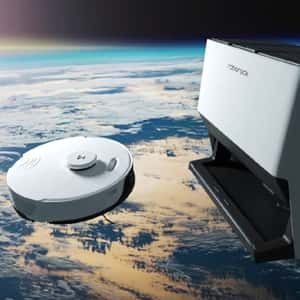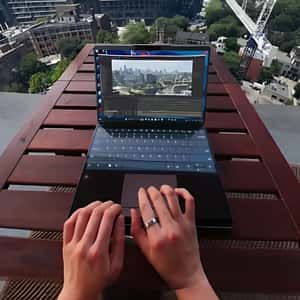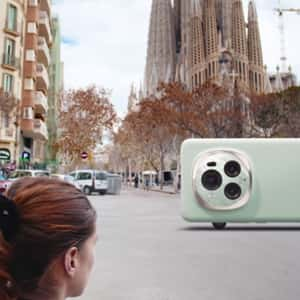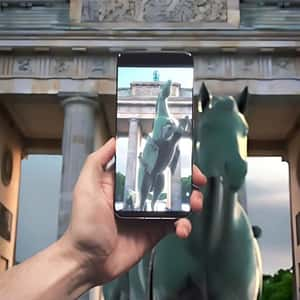The Tools Behind FOOH Part II: Pre-Production Planning
We’ve tested the best FOOH Pre-Production tools and strategies to help you plan campaigns smarter. Check them out in Part II of our blog series!

In Part I of our blog series, we covered the ideation and concept development process – turning an idea into a strong creative vision with a clear direction. With the creative vision locked in, it’s time to move from big ideas to detailed planning.
Pre-production is where everything starts to take shape. It’s the phase that makes or breaks a smooth production. It ensures that the creative and technical teams are on the same page, resources are well planned, and unexpected surprises are minimized.
No matter if you’re a creative director, project manager, or brand strategist, this stage is key to staying on track.
In this article, we’ll cover the main steps of pre-production. We’ll also share best tools for managing project timelines, location scouting, VFX planning, and budgeting. By the end, you’ll have a solid roadmap for setting up your FOOH campaign for success.
Want to learn more about FOOH? Check out our Beginner’s Guide for Agencies here.
The Importance of Pre-Production in FOOH Campaigns
It’s critical that your creative team defines the story behind the FOOH ad in as much detail as possible. What’s the message you want to convey? What’s the purpose behind the fictional event that’s being staged?
The first step for a successful campaign is to align on the vision and concept. Is it about humor, wonder, or something entirely different? An important part of planning a FOOH production is to clearly define and express the vision.
Even minor differences in expected output can lead to significant changes down the production chain. And this can result in considerable increases in costs.
Pre-production is all about foreseeing potential issues and addressing them in advance. When resources are not well planned or managed, they can create bottlenecks. This can result in stress and confusion for everyone on set or in front of monitors.
Organizing the necessary resources – whether it’s the crew, equipment, locations, or budget – is paramount. Plan carefully to use resources efficiently. This helps production run smoothly, avoiding delays and extra costs.
Pre-production planning involves a variety of tools to ensure that every step of the process runs smoothly. This includes organizing timelines and tasks, coordinating creative elements and scouting locations.
Here’s an overview of some key tools to help you manage the complexities of pre-production, broken down by category:
Project Management
Good project management is key in pre-production. Deadlines, resources, and team work all matter. Here are a few tools that can help organize tasks, timelines, and milestones:
Asana: A highly popular project management tool that allows you to organize tasks, set deadlines, and track progress. Its easy-to-use interface makes it great for visualizing tasks and ensuring that everyone on the team is aligned.
Monday.com: This platform helps teams build workflows that can be customized. It focuses on managing tasks, tracking project timelines, and enabling real-time collaboration. It’s great for tracking complex pre-production schedules. This includes things like location bookings and VFX milestones.
Notion: An all-in-one workspace where you can build project timelines, task lists, and databases. Notion is excellent for organizing script breakdowns, production schedules, and more. It also lets teams update each other in real-time.
Google Sheets: A handy, cloud-based tool popular with creative filmmakers. Its collaborative nature is perfect for production teams working on financial planning from many locations.
Clockify: A time-tracking tool that helps teams track resources. It boosts productivity and ensures pre-production hours are used effectively.
Scriptwriting and Storyboarding
Pre-production often starts with scriptwriting, storyboarding, and visual planning. These steps help bring the creative vision to life. Choosing the right software can help you clarify your ideas and keep your team aligned.
Celtx: This popular scriptwriting tool also helps you make breakdowns, shot lists, and production schedules. It’s a great tool for organizing the creative aspects of a project while keeping everything in one place. Celtx features a cloud-based option. This allows teams to collaborate on scripts and production documents instantly.
Frame.io: Primarily known as a collaborative video review platform, Frame.io also includes storyboarding tools that help creative teams plan shots, sequences, and visual elements in a shared environment. It’s great for FOOH productions that need a smooth mix of live-action and VFX.
Miro: A digital whiteboard tool that facilitates brainstorming and visual planning. Miro works well for building mood boards, visual maps, and storyboards. Multiple team members can share and edit these easily. It’s particularly helpful for mapping out ideas and collaborating remotely.
Canva: While Canva is traditionally used for design, it can also be a great tool for creating visual storyboards, mood boards, and simple graphics. It’s a user-friendly tool for creative teams and clients. It lets you visualize concepts, so you can easily share the project’s tone and style from the start.
Location Scouting
Selecting the right location is essential. Be sure to explore how each place will connect with digital elements. Will the environment accommodate the desired effects (e.g., is there space for a large virtual object to appear within the frame)? Can lighting be controlled to match digital elements?
When scouting locations, check how easy it is to incorporate VFX and consider if you need greenscreen or other techniques.
Here are some tools to help scout and plan real-world environments:
- Google Street View: Google Street View is a great tool for FOOH pre-production. It helps you find locations and pinpoint the best spots for shooting. The detailed data lets you explore potential locations around the world. You can see the environment well before arriving on set.
- Set Scouter: A platform designed specifically for location scouting, Set Scouter helps you find and book locations for your shoot. The tool helps you find various locations, link up with owners, and bargain for rates. It’s great for those looking to find unique spaces or quickly get details about available venues.
- Sun Seeker: A must-have for outdoor shoots, Sun Seeker allows you to track the sun’s movement based on your location. This is useful when planning shoots at specific times. It helps ensure proper lighting, whether you’re using natural daylight or matching VFX lighting. You can see sun positions for any given day and time, making it easier to choose the best time for shooting.
Using these location scouting tools can make planning easier. They help you choose the best spots that fit your production’s needs.
Communication
Clear communication keeps the production team aligned and ensures everything stays on track. Here are some tools to ease communication and information sharing:
- Slack: A popular team messaging app that allows for organized communication through channels. Slack helps you stay in touch with your team during pre-production. You can quickly share updates, files, and documents.
- Google Workspace: Google’s suite of collaborative tools – including Docs, Sheets, and Drive – helps teams share documents, spreadsheets, and schedules in real-time. It’s great for teamwork on script drafts, production timelines, and other key pre-production documents.
Check-List: The 9 Key Steps in FOOH Pre-Production
Pre-production is all about planning ahead to avoid delays and misalignment. This checklist helps with permits, VFX planning, and client communication. It ensures that your production operates without issues and achieves optimal efficiency.
1. Permits and Legal Requirements
Getting the right permits and following local laws is a key first step in pre-production. You might need permission to film in public spaces, private properties, or controlled environments. Doing this helps you avoid legal problems or fines in the long run.
Cities and countries have different rules. Even famous landmarks have unique usage rights. For example, you can’t film the Eiffel Tower at night because its lights are copyrighted.
Planning ahead helps you manage this necessary red tape. It ensures you get location approvals, city permits, and talent releases sorted out before production starts.
2. Planning VFX Elements for Production
For FOOH campaigns, blending 3D VFX with real-world footage takes careful planning. Pre-production determines when visual effects happen. It makes sure the lighting fits the digital elements and where to put markers or tracking points on set.
Of course, this planning isn’t just for the shoot. It’s the base for all that comes next. It helps the on-set team and VFX artists work together smoothly. This clarity cuts down on expensive changes and reshoots.
If you’re curious how today’s tools are changing the VFX workflow, read our Pika AI review from a VFX artist’s perspective to explore its strengths (and limits) for CGI ads and early FOOH mockups.
3. Briefing the Production Company
A key part of pre-production is getting the production company and post-production studio on the same page. They need to align on the project’s goals, creative vision, and technical requirements.
The production team needs to know where VFX elements go. They also need to frame shots right. Plus, they should understand how actors interact with digital elements that aren’t seen.
You need to plan lighting, camera moves, and scene layout well to help avoid problems in post-production. A good briefing helps both teams get the resources and info they need. This way, live-action footage and VFX blend smoothly. It also stops costly mistakes and reshoots.
4. Actor Briefing
When actors interact with digital elements that don’t exist on set, a solid briefing is essential. They need to grasp where the VFX elements will appear. They should also react convincingly and align their movements with what post-production requires.
While minor adjustments can be made on set, once in post, any misalignment becomes much harder to fix.
Key tip: Cast experienced actors. Acting with VFX needs good spatial awareness and imagination. Not everyone can react convincingly to something that isn’t there.
5. Managing Weather and Environmental Factors
FOOH ads should look like they’re captured by an everyday person. So, it’s key to consider factors like background noise, weather, and the setting. Plan these elements carefully.
Ask yourself: Is the location an area where people naturally come together? Are there things in the environment that might distract from the ad’s main focus or affect the final visuals?
Whether it’s rain, wind, cloud cover, or extreme heat, weather can cause delays or cause last-minute changes. Solid pre-production lets you tackle these challenges head-on. You can set up backup shooting schedules or choose equipment suited for different weather conditions.
6. Lighting Considerations
Lighting is key to setting the right mood. It also helps VFX elements mix seamlessly with live-action footage. Pre-production gives you the chance to evaluate the lighting conditions at your chosen location at different times of the day. If shooting outdoors, you’ll want to assess natural light and plan your shoot accordingly.
If you use artificial lighting, this phase helps you plan what gear you need. It also shows how the gear will work with the environment and the digital elements. With proper pre-production planning, you’ll avoid issues where the lighting doesn’t match the VFX or the shoot doesn’t happen during the optimal time of day.
7. Organizing and Renting Equipment
If the concept involves specialized equipment, briefing the production company as soon as possible is necessary. This ensures they have ample time to secure everything needed.
Some gear, like vertical video rigs, handheld stabilizers, or greenscreen setups, may not be available in-house. If you need to find them last minute, it can delay your project or lower production quality.
8. Communication with the Client
Since FOOH advertising can stretch traditional limits, it’s important to keep the client informed and involved during pre-production. A strong pre-production phase includes regular updates and meetings. This is so clients can review and give feedback at key points. These include the storyboard, location choices, and VFX design.
This kind of communication helps the client feel involved and in control of the project. It also reduces the chance of big changes or surprises during production. By tackling potential issues early, it aligns everyone’s expectations and stops scope creep.
9. Testing and Previsualization
FOOH ads are new and unconventional. So, using test footage and mock-ups helps align the team’s creative vision with the client’s. Early visual tests can spot potential issues in VFX integration, acting, or execution. This gives a chance to make changes before the full shoot.
It can help clarify the story or the narrative being told. By reviewing these early samples, the team can evaluate pacing, framing, and emotional impact. If something feels off – whether the actors deliver subpar performances, the timing of a VFX effect is off, or the overall flow lacks coherence – the team can rework it before committing to the full production, ensuring a smoother, more cohesive final product.
Previsualization helps clients see the creative direction. This way, it aligns their expectations with the project. This helps keep everyone aligned and reduces the chance of last-minute changes or misunderstandings.
This step can help spot parts of production that need more resources or time than expected. If a VFX element needs more resources or a location has unexpected issues, you can flag these during testing, allowing you to adjust the budget or timeline before starting full production.
Final Thoughts
Good pre-production is like setting up a stage. The better you prepare, the smoother things will go. Planning every part of the project in advance helps avoid surprises. This includes creative direction and technical execution and ensures a smooth workflow during production.
This comprehensive preparation enables the team to focus on the actual creation process, knowing that they have completed all the groundwork to support their work. In short, pre-production is the key to turning a creative vision into a reality without unexpected hurdles.
Ready to Take Your FOOH Campaign to the Next Level? Don’t miss out on our upcoming article titled Part III: Shooting and Capturing Footage, where we’ll dive into the production phase of FOOH campaigns.
Subscribe to our newsletter or follow this series to stay up-to-date with all the insights you need to execute successful campaigns. In the meantime, use the tools we suggested. They can help you plan better and make your production smoother. Stay tuned for more tips and tricks!



